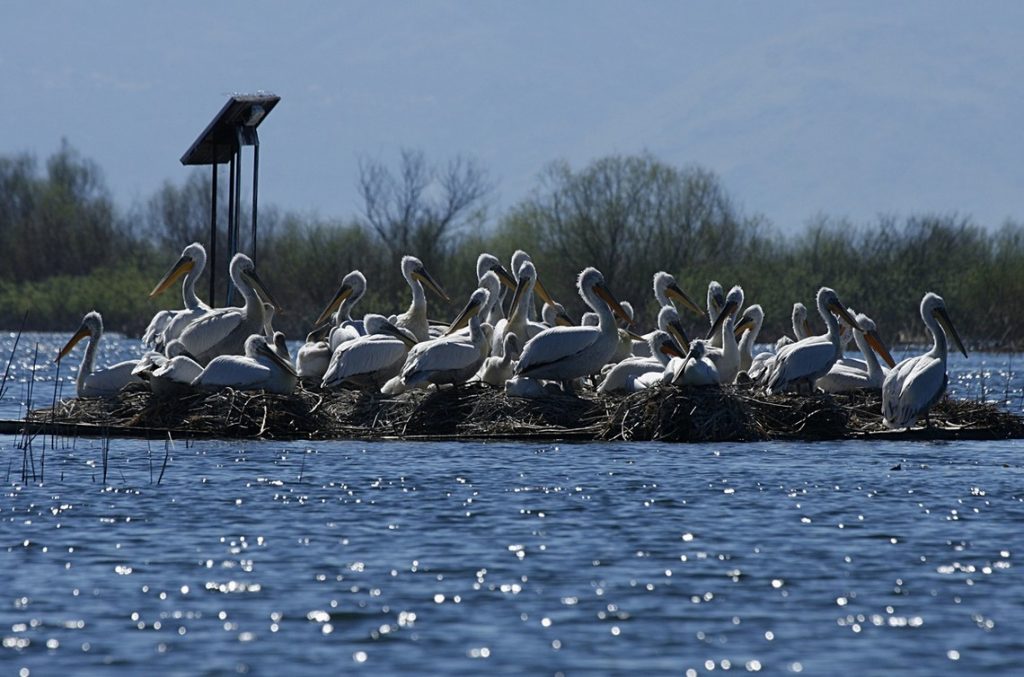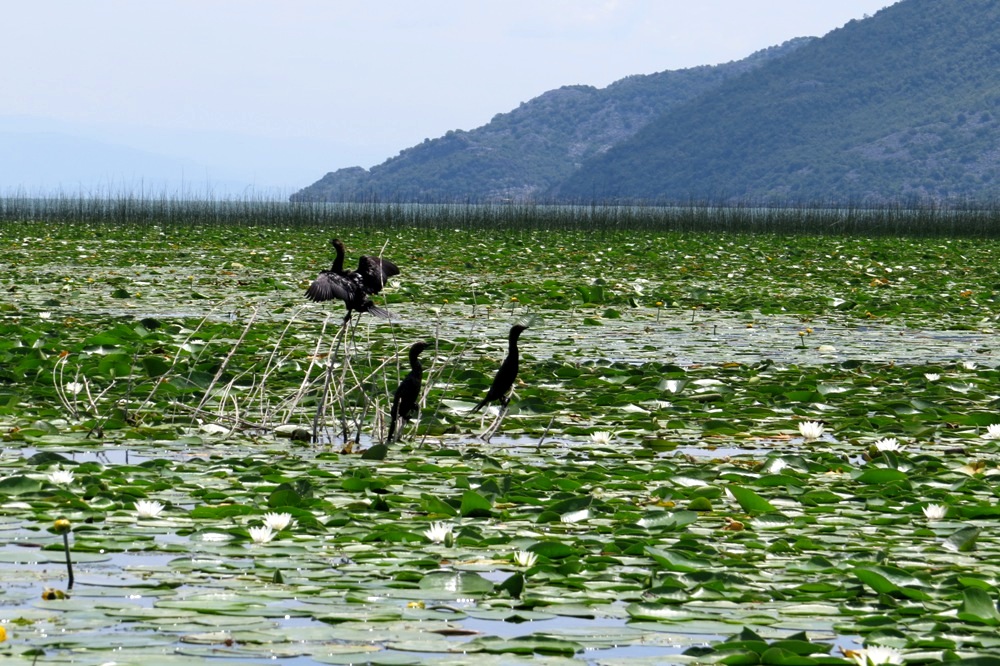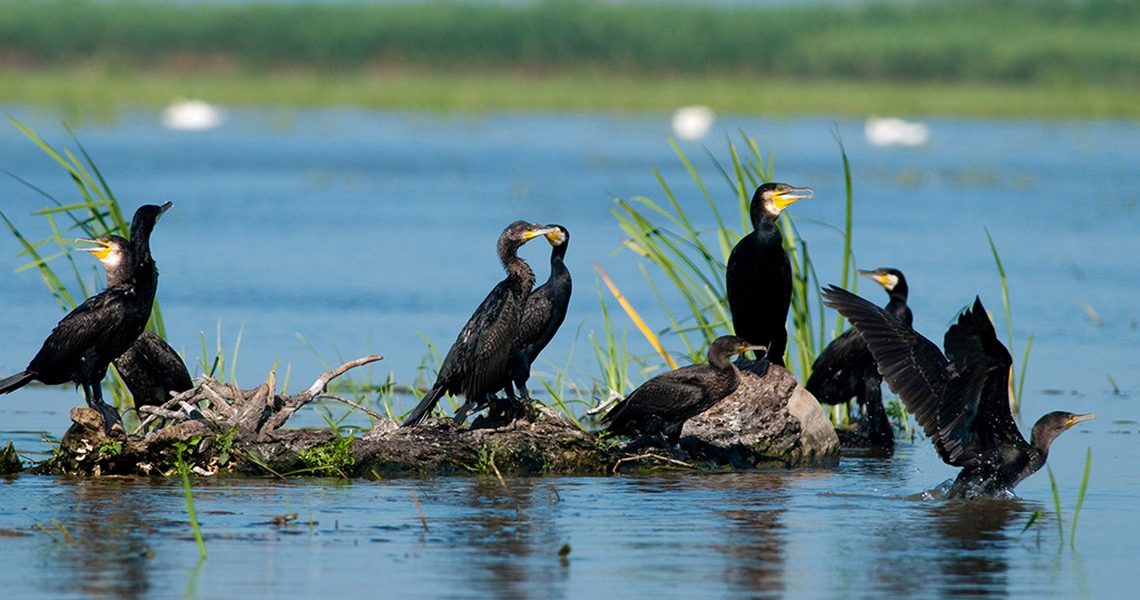The grebe
The grebes are long between 46 and 51 centimeters and the wings range from 59 to 73 centimeters. Birds in the summer, in their wedding dress, are very recognizable: they swim in the middle of the lake and each one disappears for a long time (up to one minute!). They have a long neck, white faces, black heads, and brown and black cubes on them. It's got a name on the feathers that tops it at the top of the head.
Curly pelican
Curly pelicans are 170-190 cm long, with a wing span of over 3 meters. It's 11-15 kg heavy. There is a longer curly feather on the head, which is why it got its name. It is gray with gray legs and an orange lower part of the beak, which becomes red during the mating season. It is mainly fed with fish, which can be up to 50 cm long. Daily eat about 1 kilogram of food. Nesting occurs in large colonies. The nest builds on the edge of the water or builds floating nests. Nest yearly, with 2-3 white eggs.
Big pelican
The cormorant can weigh from 1.5 to 5.3 kg (the average weight is about 3 kg) and have a length of 70 to 120 cm, with a wing span of up to a maximum of 160 cm. Around the eyes and beak is a yellow spot that, usually during the mating season, becomes white. He lives in the Old World, which includes Europe, Asia, and Africa, as well as on the shores of the Atlantic Ocean. For nesting, it mainly chooses rocky coastal areas or beaches along the sea or lakes. In such places rest and rest.
Vodomar
Like all species of this family, it has a short, tight body with short legs, short tail feathers and wide wings. A large head about 4 cm long with a long pointed beak is placed on a short neck. From the top of the feather color, it moves from cobalt to turquoise blue, and on the back there is a glittering blue track. It is most often eaten by fish, but also with aquatic insects, small crampons and pubescent trees.

























